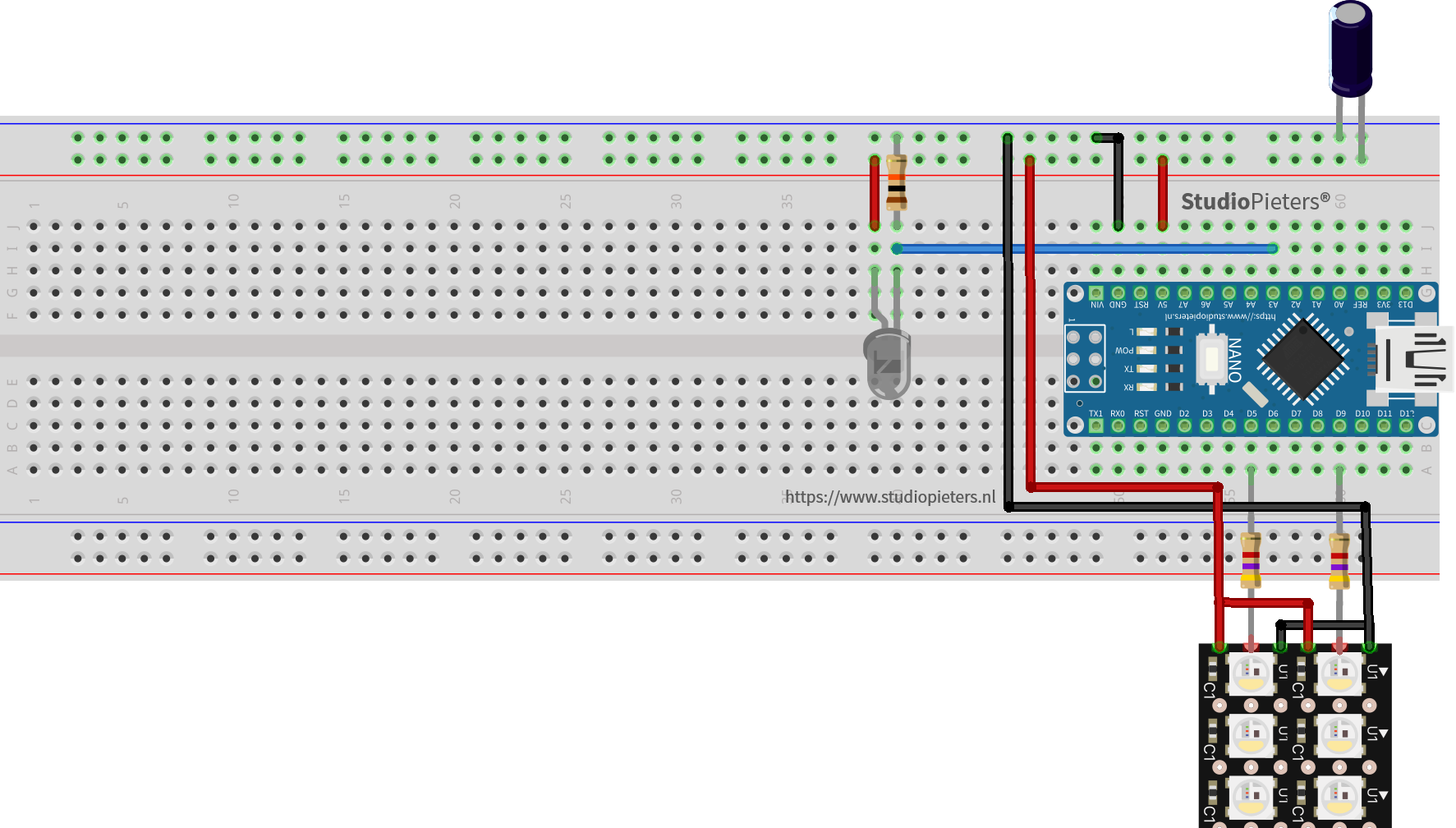I wanted to see if I could make a more realistic (LED) candle that you can buy in all kind of stores or on the internet. My idea was to use NeoPixels because I can control each pixel in every colour I want. But first I googled to see if someone has done it before, why reinvent the wheel, right? So I stubbed upon this article from Keith’s Test Garage. I look very promising.

Hardware
Before I order some parts that I don’t have yet, I want to test this project before I go any further. So for my test setup I need the following hardware.
- Arduino Nano
- 1000μF capacitor
- 1x 10KΩ resistor
- 2x 4.7KΩ resistor
- 5 mm Infrared sensor
- 2 X NeoPixel Strip 2 segments of 3 pixels (RGB+Warm White SK6812)
- 12v 5A AC/DC power supply
- Breadboard
In the original project the author used the 5V output from the Arduino, but I would not recommend this, it will blow your Arduino eventually.

Testing the setup
Evaluation
The Simple candle circuit is not yet highly sensitive, but inexpensive. A sensitive Candle circuit gives signal whenever any kind of fire is detected in an environment. So, most of the circuits are expensive and difficult to buy. An Infrared Light sensor, on the contrary, is highly sensitive and easy to use. It is almost 100% efficient. The necessary hardware items required for the more sensitive candle is a BD140 PNP Transistor.

Circuit Diagram

Working Explanation
An IR sensor is a device that detects infrared radiation falling on it. The heart of the sensitive fire alarm circuit is an infrared transmitter and infrared receiver. In normal operating conditions when infrared light is shining from the infrared transmitter from the infrared receiver, it will have low impedance. So the voltage at the base will be low, and the transistor will not work. In case when a fire is observed, an infrared beam will not be able to pass to a receiver. The resistance of the receiver will rise up and the voltage at the base will be positive, causing the LED’S to activate. You can change the sensitivity by changing the resistor value.

Conclusion
Some tinkering is needed for this project, but we got a good start. But at this time because of lack of time, I have to put this project aside for now. I will pick it up later on when I have some time to spend.
Reference
KeithsLEDCandle, LED Candle that Looks, Lights, Flickers, Blows out, Smokes, and Smells Like A Real Candle, https://github.com/keith204/KeithsLEDCandle